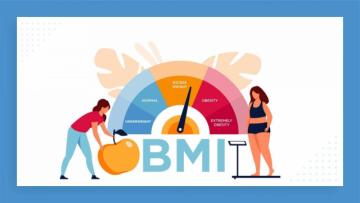
USING BODY MASS INDEX (BMI) TO ESTIMATE OBESITY RISK HAS ITS DOWNSIDES
- มอไซค์ คาเฟ่
-
 bruced
bruced
- 0
- 22 ก.ย. 2565 00:44
- 92.53.12.***
In the wake of obesity's rise as a major public health problem, the use of BMI has expanded in popularity. It has been closely connected to health risks and death rates in various populations, two regardless of age, sex, or race.
Obesity was not seriously debated until the late 1980s and early 1990s as to the validity of BMI as a measurement.
The BMI cut-offs set by the World Health Organization (WHO) do not sufficiently reflect the overweight or obese state of all populations, according to findings from cross-sectional and prospective epidemiological surveys.4 5 Among Asians, higher BMIs are linked to lower body fat percentages; whereas, among Pacific Islanders, higher BMIs are related to higher muscle mass and lower body fat percentages. 6 Along with age and physical activity, BMI's universal applicability has also been questioned as a less trustworthy indicator of cardiovascular risk.
Concerns about BMI's efficacy in forecasting body fat may influence a wide range of specialized fields, including cardiovascular disease, diabetes, weight loss programs, and population health surveys.
3 Due to the necessity of accurately predicting obesity risk in high-risk populations, it's imperative that policymakers consider the validity and limitations of BMI as a reliable predictor of obesity. Therefore, this paper's main goals are:
To outline possible drawbacks of BMI that epidemiological studies frequently fail to include.
Describe other anthropometric parameters that are equally significant in predicting obesity risk.
Obesity as a Measure of Body Mass Index (BMI)
The best anthropometric assessment of body fatness known to date is the BMI for public health reasons.
When a person's BMI rises, the likelihood of developing health problems increases, especially when the BMI is 30 or above. 1 Although it is not a direct measurement of body fat, BMI has been proven to correlate with excess weight for a given height. In 1998, the World Health Organization (WHO) suggested 8 BMI cut points, as given in Table 1.
Due to the intrusive nature of direct body fat measurements, such as skin fold measurements and underwater weighing, BMI has been the most often utilized indicator of weight-related health risk in the United States.
Aside from that, the time, resources, and expertise required to take accurate measurements of body fat necessitate more time-consuming methods. 3 It is also more appropriate to employ BMI cut-off points in epidemiological contexts, where the association between BMI and health outcomes within and across populations may be used to identify potential causes of disease.. 2 There has been a rise in the usage of BMI in the overweight and obese people due to research showing that a BMI greater than or equal to 30 increases the risk of high blood pressure, heart disease and stroke as well as diabetes and some forms of cancer. 1 It's also possible that measurements taken by various observers and bigger people, such as triceps skin fold thickness, are difficult to repeat even if they're pretty well connected with body fat %. 10 A more accurate estimate of body fat is provided by comparing height and weight measurements and weight-for-height indexes, which may be used to compare the adiposity of different populations. 10
Potential Risks of Using BMI as an Obesity Indicator
Ideally, body fat measures should be accurate, independent of gender, age, or race.
There are pros and disadvantages to each strategy. BMI, on the other hand, has a slew of flaws. In addition, environmental variables such as physical activity level, age, gender, and ethnicity all impact the BMI-to-body-fat ratio connection. 2 As a result, various methods of assessing adiposity may be more useful and accurate for a given person.
An increase in BMI as a result of aging
Fat-free mass (FFM) and muscle mass decrease significantly as we get older, whereas visceral fat increases even if our weight remains the same.
Fat accumulation in the abdomen and organs is more stronger linked to health problems than previously thought (VFM).
Using BMI as a measure of health status is flawed since it does not correlate well with VFM. Study results show that older people have a higher percentage of their body weight as fat than younger people, even when both groups had the same BMI. A study of persons over the age of 70 found that those who were classed as overweight by the WHO had the lowest mortality risk, but those classified as the normal weight had a greater mortality risk. 13 Due to the frequency of illnesses, a reduction in body fluids, and the lack of specified cut-off points for this age group, the use of BMI in older people may potentially be deceptive. As a result of these findings, some people are wary about advocating weight loss among the elderly who are already obese. The reverse causation theory, which says that older persons lose weight while they are unwell and before they die, may have led to discrepancies in observational research. Accordingly, it has been proposed that adiposity measurements like waist circumference (WC) or waist-hip ratio (WHR), which better represent VFM, may be better markers of older obesity risk and mortality than BMI. 11 Morbidity and mortality among the elderly may be better predicted by centralization of body fat. 14 The combination of WC and MUAC has thus been advised in clinical practice to estimate mortality risk among the elderly since they have been linked to considerably higher mortality risk in this group.
Homepage: https://bodyvisualizer.net

